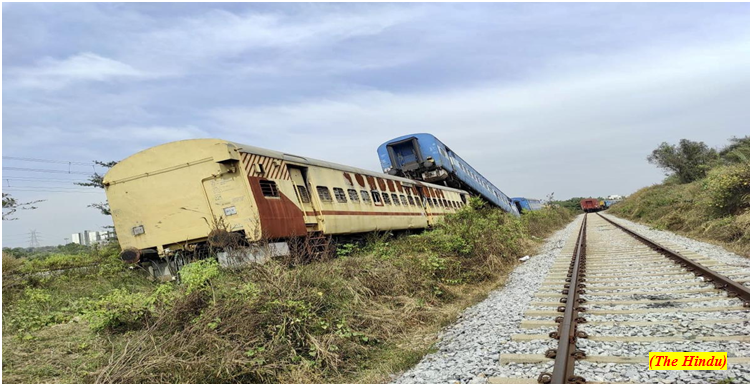The SC ruling on pensions for women IAF officers (GS Paper 2, Judiciary)

Why in news?
- Recently, the Supreme Court asked the Indian Air Force (IAF) to consider the grant of pensionary benefits to 32 Short Service Commission (SSC) women officers, who fought for 12 long years to be reinstated and granted permanent commission.
- This is the latest in a series of legal judgements related to women officers in the armed forces, giving them equal opportunities along with their male counterparts.
What are the main highlights of the judgement?
- A Bench comprising of the Chief Justice of India (CJI) said that these women SSC officers had the legitimate expectation of being granted an opportunity to claim permanent commission in terms of prevailing policy.
- They further remarked that these women SSC officers be considered for grant of pensionary benefits, while exercising its extraordinary power under Article 142 of the Constitution for doing complete justice in any matter pending before it.
- The officers had joined the service between 1993-1998 and were granted extensions of six and four years successively before being released from service between 2006 to 2009.
Permanent Commission to women:
- The Navy and the IAF had opened up permanent commission to women much before the Army.
- In a landmark judgment in the Babita Puniya case in February 2020, the Supreme Court directed that women officers in the Army be granted permanent commission (PC) as well as command postings in all services other than combat.
- Further, on March 25, 2021 the Supreme Court in Lt. Col. Nitisha vs. Union of India held that the Army’s selective evaluation process discriminated against and disproportionately affected women officers seeking permanent commission.
- In the Army, women are commissioned in 10 arms and services as officers and that permanent commission had been granted. “Women are being inducted as jawans in Corps of Military Police since 2019.
NDA & Agniveers:
- The National Defence Academy (NDA) has started inducting women cadets from the Autumn 2022 term, with 19 vacancies being allotted to women. The Navy has also opened 12 branches, cadres and specialisations for women officers.
- It has already announced that women would be inducted as Agniveers under the Agnipath scheme, with training set to commence shortly.
- As of March 2022, there are 1,640 women officers in the IAF excluding medical, dental and nursing officers. This number incudes 15 fighter pilots, and 53 transport and helicopter pilots each. The fighter stream of IAF was opened for women in 2016.
Railways to simulate accident to test preparedness of relief teams
(GS Paper 3, Disaster Management)
Why in news?
- In a first, the Indian Railways will assess the preparedness and performance of its accident relief teams in real-time by simulating a major accident, involving derailment of coaches and huge casualties, in Bengaluru.

Details:
- For this exercise, at least 10 condemned coaches have been ‘derailed’ and set up along the railway tracks in Bengaluru.
- Accident relief teams drawn from different zones across the railway network will participate in the drill to ‘rescue’ about 100 passengers and restore normal traffic.
Stakeholders:
- The exercise is being organised by the Indian Railway Institute of Disaster Management (IRIDM), Bengaluru, in association with the National Institute of Disaster Management.
Background:
- The initiative by the IRIDM comes days after the Ministry of Railways nominated it as the nodal agency for monitoring and assessment of mock drills.
- With fewer train accidents, and retirement of staff attached to ARTs, there was a need to sensitise the ART staff to the emerging challenges and also enhance their capacity by exposing them to technologies and advanced relief/rescue equipment.
Significance:
- The exercise, the scale of which is biggest in the Indian Railways, was necessitated by the increase in speed and load of trains in recent years.
- Realistic mock drills were essential to assess the efficacy of the Accident Relief Train (ART) team and ensure their preparedness in the event of major accidents.
CITES COP19 lists sea cucumbers as ‘threatened’
(GS Paper 3, Environment)
Why in news?
- Recently, the 19th Conference of Parties (COP19) to the Convention on International Trade in Endangered Species (CITES) in Panama City has accepted a proposal to include sea cucumbers in Appendix II of the Convention.
Genus ‘Thelenota’:
- COP19 decided to include the genus ‘Thelenota’ in the category, which classifies that the species is not facing the threat of extinction.
- However, its trade must be regulated to avoid exploitation that will become incompatible to its survival.
- The European Union, the Seychelles and the United States proposed three species under Thelenota to be included in Appendix II.

Why sea cucumbers?
- The proposal was initiated by France. The country stressed the need to protect sea cucumbers, citing their role in marine ecosystems.
- Sea cucumbers perform the same role on the seabed that earthworms perform on land.
- They feed primarily on tiny pieces of algae and marine creatures, which get broken down into smaller and smaller pieces.
- Along with the sand, sea cucumbers excrete byproducts that benefit ocean ecosystems, particularly coral reefs.
- Sea cucumbers also excrete calcium carbonate, which is a primary ingredient in coral formation, and ammonia, which acts as a fertilizer and promotes coral growth.
Trafficking:
- An analysis published by the Wildlife Conservation Society-India (WCS-India) this September showed that sea cucumbers were the most frequently trafficked marine species in India from 2015-2021.
- Tamil Nadu had recorded the highest number of marine wildlife seizures during this period. The state was followed by Maharashtra, Lakshadweep and Karnataka.




